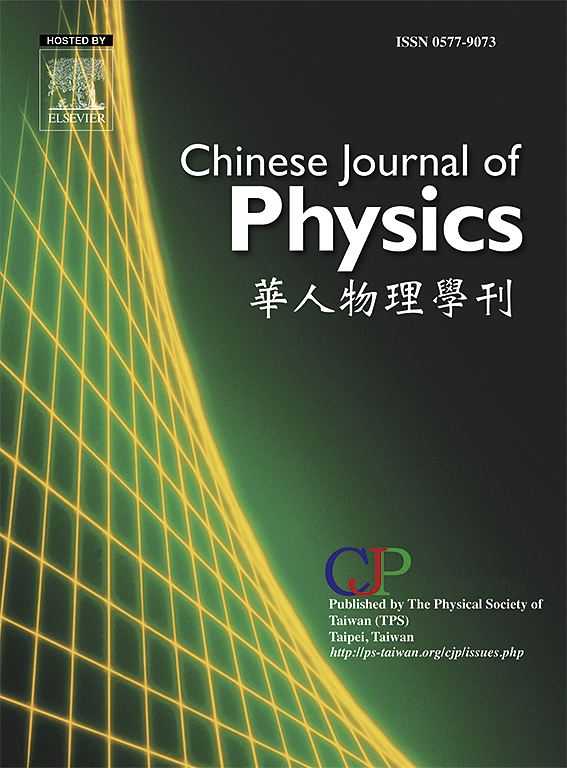Efficiency optimization of micro-swimmers in viscoelastic bio-fluids within complex cervical environments
IF 4.6
2区 物理与天体物理
Q1 PHYSICS, MULTIDISCIPLINARY
引用次数: 0
Abstract
Biological fluids often harbor motile organisms, making the study of micro-swimming mechanisms within these environments critical for advancing medical applications. This research aims to deepen our understanding of how micro-swimmers interact with their surrounding fluids. Addressing the complexities of these interactions requires an interdisciplinary approach that integrates biology, mathematics, and physics. In this study, we utilize the classical Navier-Stokes equations to model the rheological behavior of mucus, focusing on its representation as a Finitely Extensible Nonlinear Elastic Peterlin (FENE-P) fluid. We analyze three distinct scenarios within bounded channels: passive, simple active, and complex active configurations, all filled with FENE-P mucus. The propulsion in these micro-channels is driven by the movement of spermatozoa and the dynamics of the channel walls, underpinned by key assumptions such as creeping flow and lubrication theory. Conservation of momentum yields a second-order differential equation, which we solve numerically to determine the propulsion speed under specific conditions. Our findings outline the conditions that optimize swimming efficiency, offering valuable insights into the design of artificial micro-swimmers with customizable speeds. These results hold significant potential for applications in biomedical engineering and the development of targeted delivery systems in healthcare.

复杂颈部环境中粘弹性生物流体中微游泳者的效率优化
生物流体通常含有活动生物体,因此研究这些环境中的微游泳机制对于推进医学应用至关重要。这项研究旨在加深我们对微型游泳者如何与周围液体相互作用的理解。解决这些相互作用的复杂性需要一个跨学科的方法,整合生物学,数学和物理学。在这项研究中,我们利用经典的Navier-Stokes方程来模拟黏液的流变行为,重点关注其作为有限可扩展非线性弹性彼得林(FENE-P)流体的表示。我们在有界通道中分析了三种不同的情况:被动、简单主动和复杂主动配置,所有这些都充满了FENE-P粘液。这些微通道中的推进力是由精子的运动和通道壁的动力学驱动的,并得到了蠕动流动和润滑理论等关键假设的支持。动量守恒得到一个二阶微分方程,我们用数值方法求解该方程以确定特定条件下的推进速度。我们的研究结果概述了优化游泳效率的条件,为设计具有可定制速度的人工微型游泳者提供了有价值的见解。这些结果在生物医学工程和医疗保健中靶向递送系统的发展中具有重要的应用潜力。
本文章由计算机程序翻译,如有差异,请以英文原文为准。
求助全文
约1分钟内获得全文
求助全文
来源期刊

Chinese Journal of Physics
物理-物理:综合
CiteScore
8.50
自引率
10.00%
发文量
361
审稿时长
44 days
期刊介绍:
The Chinese Journal of Physics publishes important advances in various branches in physics, including statistical and biophysical physics, condensed matter physics, atomic/molecular physics, optics, particle physics and nuclear physics.
The editors welcome manuscripts on:
-General Physics: Statistical and Quantum Mechanics, etc.-
Gravitation and Astrophysics-
Elementary Particles and Fields-
Nuclear Physics-
Atomic, Molecular, and Optical Physics-
Quantum Information and Quantum Computation-
Fluid Dynamics, Nonlinear Dynamics, Chaos, and Complex Networks-
Plasma and Beam Physics-
Condensed Matter: Structure, etc.-
Condensed Matter: Electronic Properties, etc.-
Polymer, Soft Matter, Biological, and Interdisciplinary Physics.
CJP publishes regular research papers, feature articles and review papers.
 求助内容:
求助内容: 应助结果提醒方式:
应助结果提醒方式:


